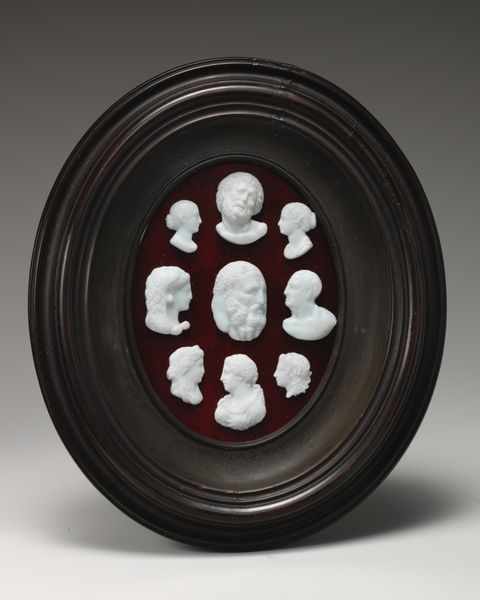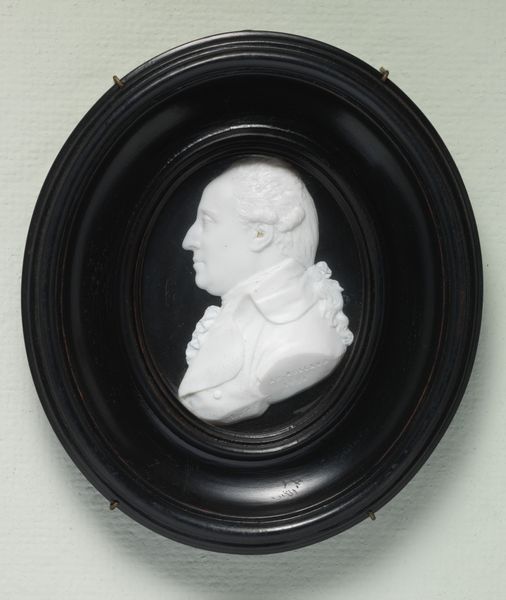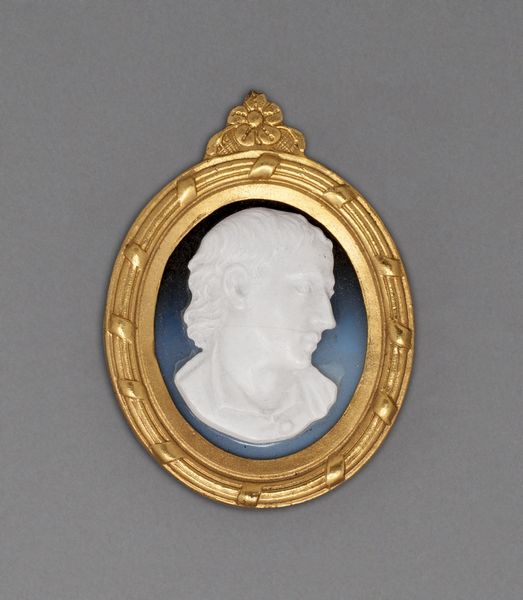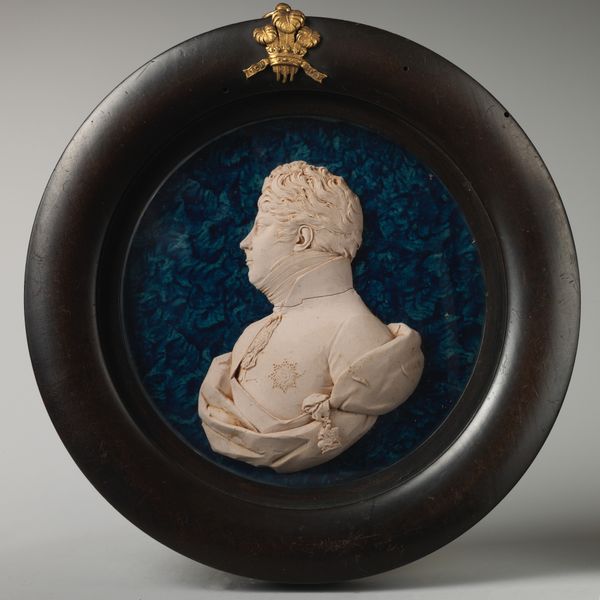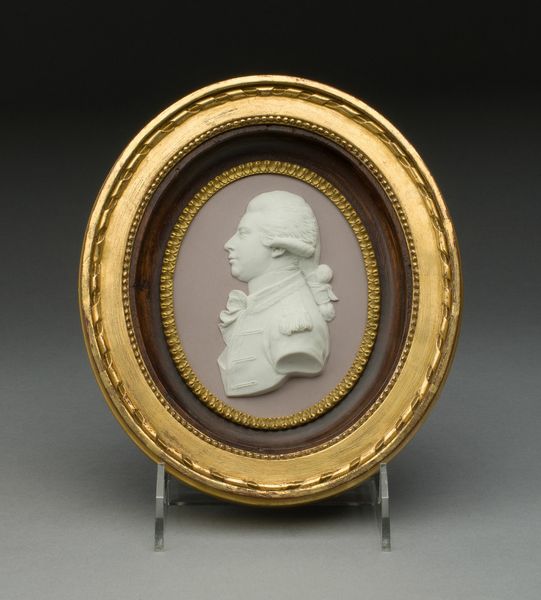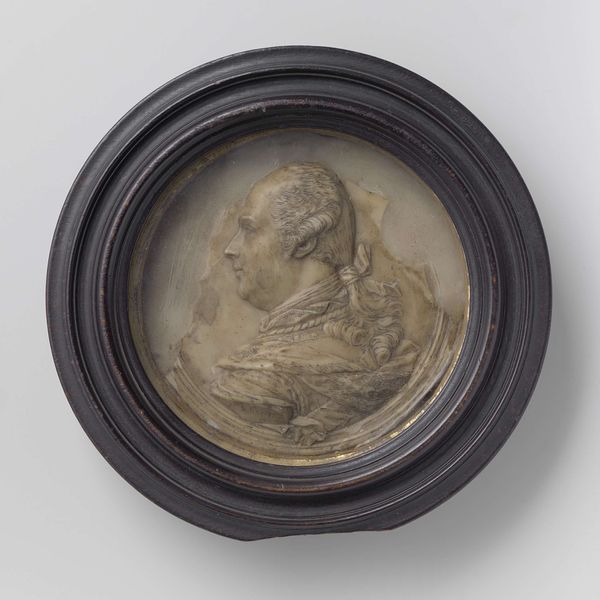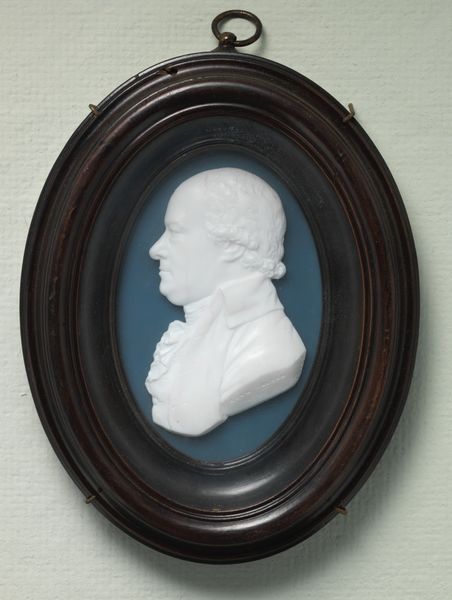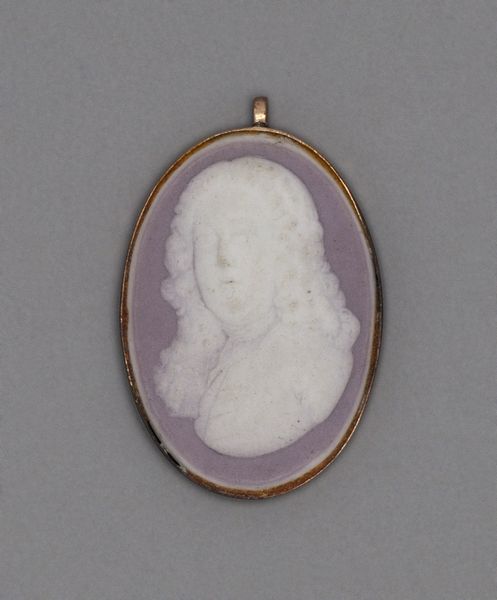
glass, sculpture, marble
#
portrait
#
neoclacissism
#
head
#
glass
#
ancient-mediterranean
#
sculpture
#
decorative-art
#
marble
#
profile
Dimensions: Framed: 7 × 5 5/8 in. (17.8 × 14.3 cm)
Copyright: Public Domain
Curator: Here we have “Casts from Antique Gems (9)”, created between 1785 and 1799 by James Tassie. You'll notice it’s currently housed at the Metropolitan Museum of Art. The work consists of glass pastes set within a wooden frame, mimicking the appearance of marble reliefs. What strikes you most about it at first glance? Editor: It’s immediately classical, of course. These crisp white profiles set against that subtle maroon backdrop... It almost feels like peering into an aristocratic parlor where intellectualism and idealized forms were prized above all else. There's a strange sense of detached reverence, a removal from lived reality. Curator: Precisely. Tassie was known for reproducing ancient cameos and intaglios. His work contributed significantly to the Neoclassical movement's visual vocabulary. It reflects a desire to resurrect the perceived purity and order of ancient Greece and Rome during the Enlightenment. Editor: Yes, but the Enlightenment had some real blind spots! By exclusively celebrating a Greco-Roman aesthetic, were they reinforcing existing power structures? Who did these classical ideals exclude? What stories were intentionally left out of that perfect picture? Curator: That's a critical lens, absolutely. Neoclassicism often served as a visual language for elite circles. It became associated with empire and colonialism. These idealized forms obscured the realities of exploitation and inequality of the period. Think of how frequently classical imagery pops up in political propaganda! Editor: And even within that idealized framework, the limitations are obvious. The gazes all seem to look back instead of at other characters. What's the power dynamic suggested? It reinforces how some past artistic interpretation or "truth" has precedence, as if modern stories are not worth documenting. Curator: Well, this wasn't just art for art's sake, it played an educational role as well. Think of wealthy families showcasing these pieces; Tassie’s work became a means to cultivate an appreciation for history, philosophy, and good taste in order to legitimize the upper classes' rule in society. Editor: So, it's not enough to simply appreciate the aesthetic. We must acknowledge the political forces that shaped its creation, promotion, and reception, because what someone puts on a pedestal always tells a specific story that omits alternative perspectives. Curator: Indeed, art can offer tremendous beauty but that doesn’t mean that we cannot question the structures in which beauty takes form. Editor: Right! And what we choose to conserve as beautiful tells volumes about what perspectives we prioritize.
Comments
No comments
Be the first to comment and join the conversation on the ultimate creative platform.
